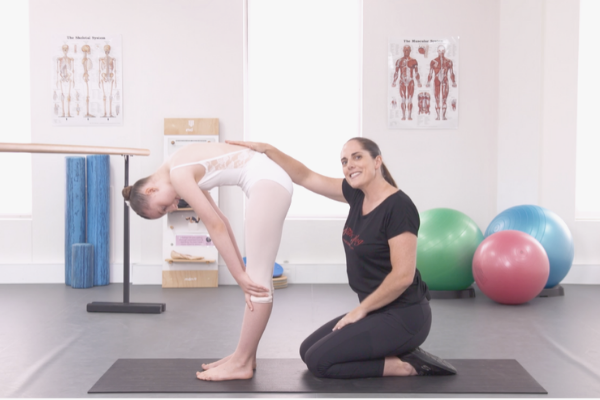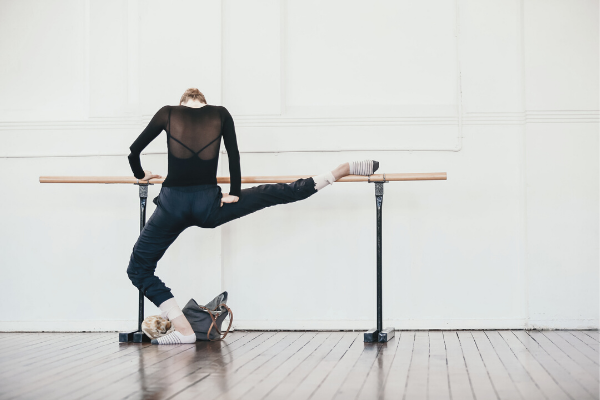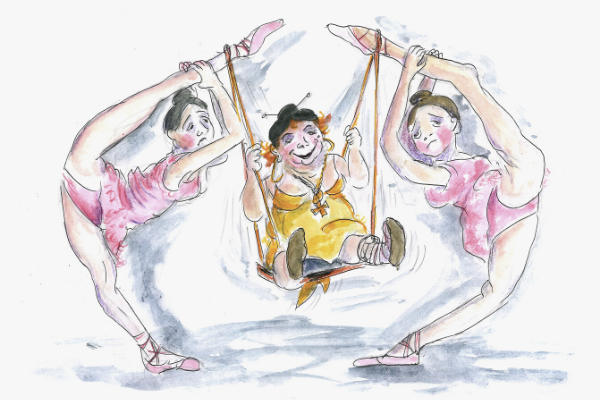Reduced Flexibility
"Hi Lisa, I’m not a dancer, I’m a weightlifter, 5 foot 7 and 130 pounds and 20 years old. Due to lifting weights for years many parts of my body are very tight, in particular my spine, back, neck, shoulders and legs; essentially massively reduced flexibility. I’ve taken human anatomy and physiology years ago so I have a basic understanding of the fascia of muscles. The fascia is like a web that holds everything together beneath the skin.
My restrictions are mostly in my spine, if I had to pick one part of the body to focus on. I take yoga a few times a week at the gym and that is slowly helping with my flexibility but my entire body, even after doing years of normal stretches has remained the same state of tightness.
I saw in one video you were massaging a little girl’s neck and after about five minutes she miraculously had a greater range of motion. So is that what your technique is, massaging your cervical vertebrae so that the central nervous system is relaxed and loosens up the rest of the body? Remember, I’m a weightlifter and beginning yogi, not a ballet dancer, not to imply that I don’t have an interest in ballet. Thank you Lisa. Joey."
Hi Joey, and thanks for your letter! It’s great that you’re taking an interest in your body and hopefully also in dance. It's also great that you’ve started yoga.
First of all though, I want to clarify a few things about the technique that I was doing on the girl’s neck. It’s not so much about "massaging her vertebrae and releasing her central nervous system", although the actual act of massaging will help create a certain state of relaxation. However, what I’m actually doing is releasing the suboccipital muscles which are tiny small muscles deep up into the back of the neck. These muscles actually have direct connections through into the Dura, which is the covering of the spinal cord. They also have direct connections into the fascial line that runs down the back of the body, which is sometimes called the "Superficial Back Line".
By releasing these muscles and therefore releasing that big fascial line, we can improve flexibility through the whole back body. The Front Splits Fast Program is not just focused on that, that’s one tiny technique. The program is a collection of all kinds of different techniques to release specific tension points in different areas of the body. You mention that most of your restriction is actually through the spine and this is something that we do work a lot on.
Here is the video that you mention - with the release technique demonstrated.
There are plenty of other things that I would encourage you to think about as well.
1. If you look at the anatomy of the spine, there are lots of joints down in the low back and little holes where the nerve roots exit. A lot of restriction in your flexibility can develop if these joints are quite tight (if the facet joints get locked together) or there is fascial or muscle tension where these nerves come out. Ideally, when you do a full forward bend in an adult spine, the spinal cord should slide by about 11 centimetres. If you have a lot of tension in the muscles through the low back this can stop the nervous system from sliding, which can restrict your mobility a lot. This is something that we focus on in the Program, releasing any restriction in these joints but also any tension in the muscles that may be holding onto the nerves.
2. Another area that is really important to assess, especially if you’re doing weightlifting, is actually deep in the bottom. We have a muscle called Piriformis that wraps from the outside of the hip round to the front of the Sacrum. If your stability through the pelvis is not very good (across the Sacro Iliac Joint - SIJ), this muscle often contracts too much to try and stabilise the pelvis. This can also happen in people who are a little hypermobile. We have lots of little nerves that exit through the sacrum and they actually combine to make the Sciatic nerve that runs down the back of your leg. If the Piriformis muscle is very tight it can actually impede the sliding of that Sciatic nerve and the Lumbar Plexus (in the low back) and can also restrict the mobility through the hips. The Front Splits Fast program is based on isolating your specific and individual areas of tension, and showing you targeted release techniques to open those up.
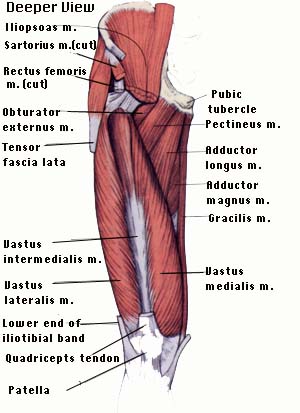
3. The other thing that I would look at is your technique with your lifting. This is something that is very, very important. In any exercise or sport that we are doing where we need spinal stability, it is essential that we’re actually stabilising the spine correctly. What tends to happen is overuse of some muscles, due to weakness in others.
Anatomically we have little deep posture muscles that help control the position of the spine. These are what I call endurance muscles; because they are designed to contract gently, but for long periods of time. Then you have layers of bigger back muscles that are more powerful movement muscles that are designed for fast contractions for short periods of time that are a little more explosive. If you find that you’re consistently tight through the back, what may be happening is that the big back muscles may be taking over from the deep little postural muscles if they are not really doing their job properly. So if those big movement muscles are contracting for long periods to help stabilise your back while you’re lifting, they may be getting very, very tight and you’ll often feel like you want to have a massage to release this tension.
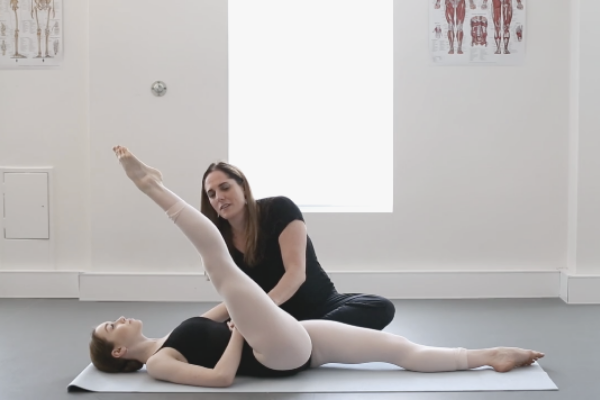
In this case, I would recommend that you look at all the core stability work that we do, and spend time training the deep little back muscles, the pelvic floor, and the deep abdominals to get those endurance muscles really helping to stabilise the spine. This will allow the bigger back muscles to release and actually give you some more mobility.
So I would look at both the strength and control aspects of the spine and pelvis and then also the fascial and neural releases that we do on the Front Splits Fast Program.
I hope that’s answered your question and look forward to hearing how you go.
Flexibility Resources
If you are looking to delve deeper into this topic, check out the following programs:
- Front Splits Fast Program: This program translates therapeutic techniques for improving Fascial Mobility and Neural Tension into easy to do exercises that can enable instant changes in your flexibility without the risk of damage through over stretching.
- Level Two Online Flexibility Intensive: If you are a dance teacher, this is the perfect continued education course for you. During this course you will understand the multifactorial nature to flexibility training. You will also explore safe ways of assessing exactly where each individual is restricted in order to create the most effective program.
- Level Three Online Flexibility Intensive on 'How to Train Extreme Mobility Safely': This workshop will help you assess your students in detail and be able to offer them effective techniques in a logical clear order to get them on the way to achieving THEIR optimal flexibility. It is also for teachers who are concerned at the extreme positions young dancers are wanting to work into, as it gives you safe guidelines on how to guide their development.





